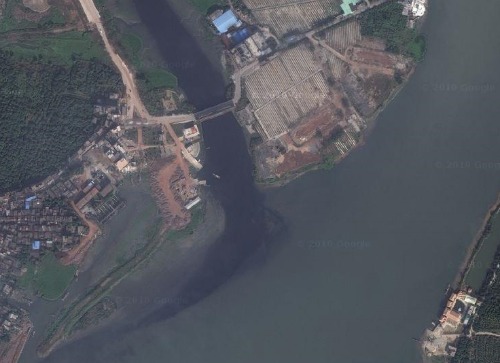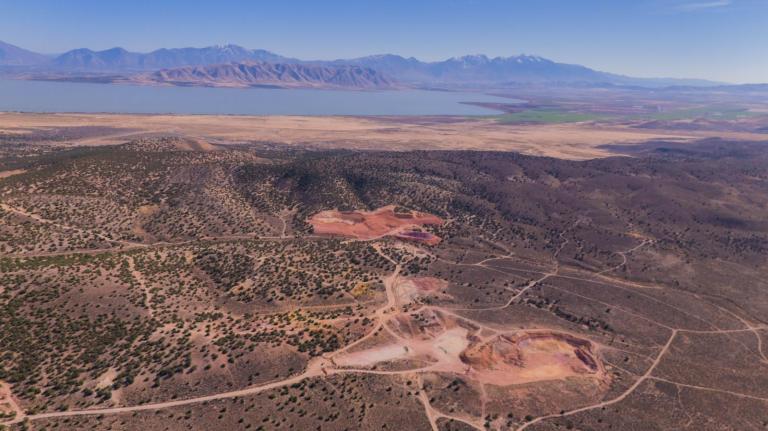 Something in the water.Photo: Google MapsDenim sucks — at least, environmentally speaking. If there’s any doubt in your mind, check out the image to the right. New York Times writer Tom Zeller Jr. found the Google Maps photo of Xintang, China, the No. 1 denim producer in the world. That dark blue stuff? That’s dye from the jean-making process flowing into a river. Not feeling guilty yet? As Jess Zimmerman wrote last month, a single pair of jeans drinks up over 180 office water coolers’ worth of H20, between cotton production, jean manufacture, and laundry. Ugh.
Something in the water.Photo: Google MapsDenim sucks — at least, environmentally speaking. If there’s any doubt in your mind, check out the image to the right. New York Times writer Tom Zeller Jr. found the Google Maps photo of Xintang, China, the No. 1 denim producer in the world. That dark blue stuff? That’s dye from the jean-making process flowing into a river. Not feeling guilty yet? As Jess Zimmerman wrote last month, a single pair of jeans drinks up over 180 office water coolers’ worth of H20, between cotton production, jean manufacture, and laundry. Ugh.
Even if you aren’t feeling blue about your jeans, 30 public-minded businesses and organizations are. From H&M and Wal-Mart to the EPA, this group — called the Sustainable Apparel Coalition — wants to slap every last T-shirt, sock, and unitard with a number indicating how green it is.
It would be a comprehensive score: Each item of clothing would be evaluated on a number of factors (like water use, energy efficiency, and labor practices) for each step of its creation (including cotton growth, dye, and packaging).
But it will be tricky: Giving each garment a score will be a hefty task. “[T]he various pieces and parts of any single garment … often come from such a diverse multinational chain of fabric mills, dye operations, and assembly plants that quantifying the environmental impact of a single item is nearly impossible,” says the Times.
Help for designers too: In addition to a consumer-facing number, the short-term goal is a database tool to help designers make greener choices. “A clothing company designer could then use the tool to select materials and suppliers, computing an overall sustainability score based on industry standards,” says the Times. Designers could use the tool to fiddle with designs until clothes were green enough for their company’s standards.
Maybe not anytime soon: The Sustainable Apparel Coalition “plans to focus, at least in the short term, on the supply chain tool, [so] consumers might not see a sustainability label in stores for some time.” Translation: It’ll be a while before someone in the dressing room asks, “Does this make my carbon footprint look fat?”
Read a Q&A with two architects of the Sustainable Apparel Coalition.




